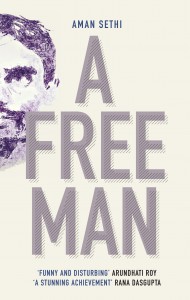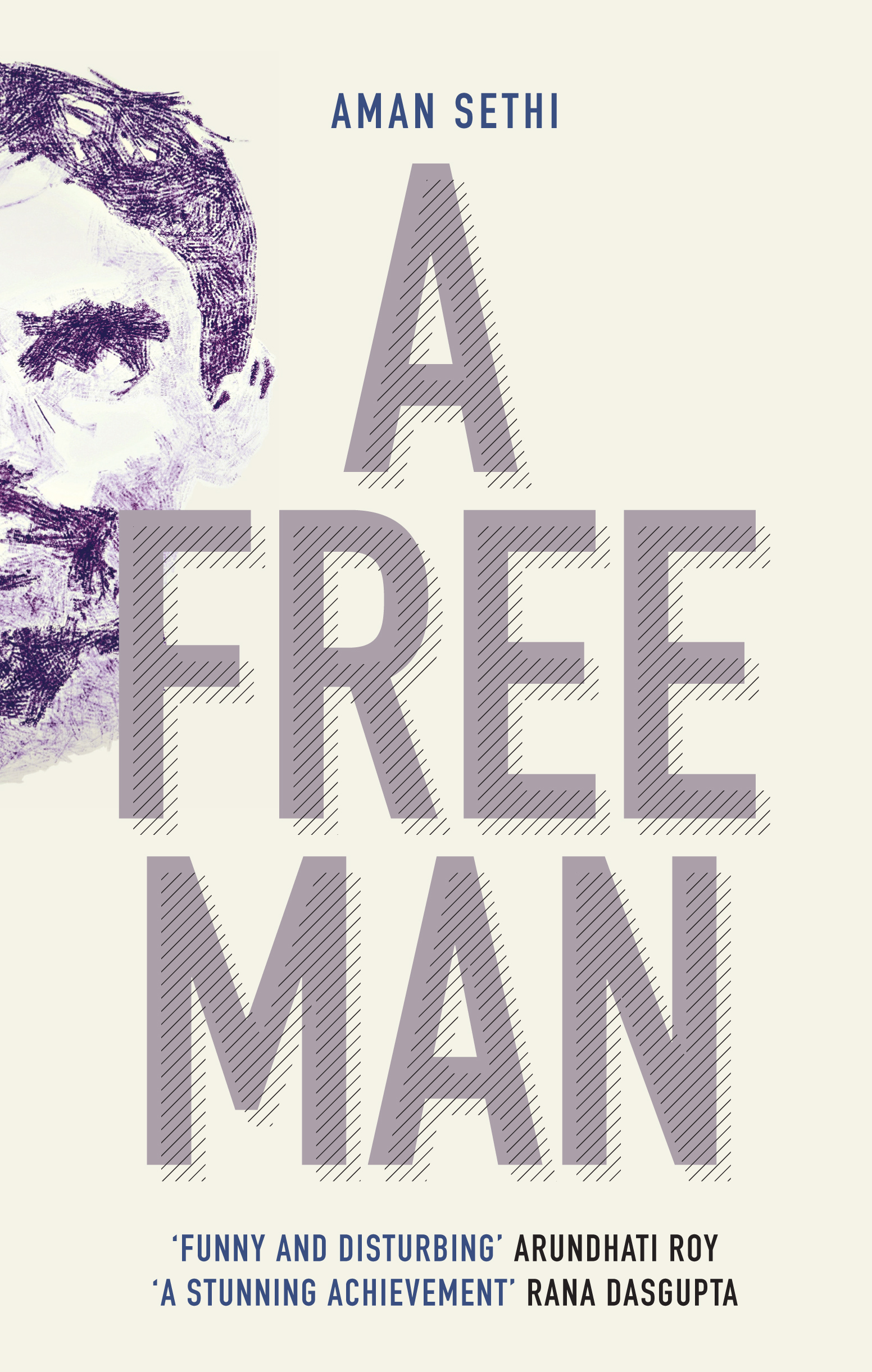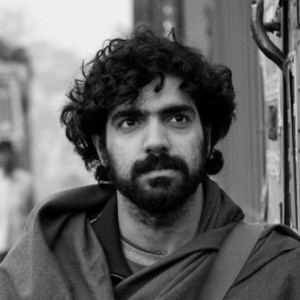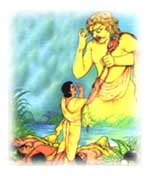by Anupama Krishnakumar
[box] ‘A Free Man’ by Aman Sethi is narrated exceptionally well and combines good journalistic writing with a moving story of an unknown man and his life. That is its winning point, making it a worthy read. [/box]‘The ideal job,’ Ashraf once said, as if elucidating a complex mathematical function, ‘has the perfect balance of kamai and azadi’….’Kamai is what makes work work. Without kamai, it is not work, it is a hobby.’….’Azadi Aman bhai, Azadi,’ ….’Azadi is the freedom to tell the maalik to fuck off when you want to. The maalik owns our work. He does not own us.’
Those are pearls of wisdom from Mohammed Ashraf, a construction worker and a painter at Sadar Bazaar in Delhi, also the central character of the book, ‘A Free Man’. The author, Aman Sethi, a correspondent with The Hindu, does remarkable justice to his mission, in his commendable debut book. Sethi who meets Ashraf for an article on construction workers first, returns to Bara Tooti Chowk in Sadar Bazaar in search of him, for the purpose of interviewing Ashraf again for a research project.
As the narrative unfolds, one senses the desperation as Sethi tries hard to give a timeline to the invisible man’s life, only left to find the 40-year-old Ashraf at his elusive best. But what comes out of it are those little details of the life of an itinerant labourer, his friends – Rehaan and Lalloo and other characters like Kaka, J.P.Singh, Bhagwan Das, Kalyani and Satish.
Sethi’s fine observation and his ability to pick out incidents that define the nature of people and their lives, Mohammed Ashraf’s included, works like magic.
 Those who find books on such subjects ‘dry’ will run into an exception here. ‘A Free Man’ is easy to read, and although filled with details, surprisingly doesn’t make you feel loaded; it takes you along – earnestly bringing to life vivid images through the written word. And Bara Tooti Chowk, one of Delhi’s largest labour markets, comes alive in quite a fascinating way. As you read the book, you walk along the roads, find men drunk and stoned and lying on footpaths, smell cheap liquor; you hear them laugh and chat away at the tea stall, while kidneys are getting sold secretly in the background; and you find yourself feeling uncomfortable about a way of life totally alien to you.
Those who find books on such subjects ‘dry’ will run into an exception here. ‘A Free Man’ is easy to read, and although filled with details, surprisingly doesn’t make you feel loaded; it takes you along – earnestly bringing to life vivid images through the written word. And Bara Tooti Chowk, one of Delhi’s largest labour markets, comes alive in quite a fascinating way. As you read the book, you walk along the roads, find men drunk and stoned and lying on footpaths, smell cheap liquor; you hear them laugh and chat away at the tea stall, while kidneys are getting sold secretly in the background; and you find yourself feeling uncomfortable about a way of life totally alien to you.
Yes, that’s what ‘A Free Man’ does to you – it shows you the other world, one that you are only vaguely aware of and as with most of us, the world we are hesitant to know about or worse, a world we easily become indifferent to. It’s the world inhabited by poor people drawn to the capital city with a bundle of clothes, tattered notes and a piece of paper and barrels of hope. It’s the world where life, no matter how hard you try, doesn’t take a specific direction. It’s a world where every tomorrow is a bleak possibility, where the future is all but a canvas of colourful dreams and nearly impossible fascinations. It’s a world where money is earned one day, life enjoyed to its best the same day (read getting drunk to death, well, almost!) only to get back to square one to start all over again – from pauper to drunkard to pauper again. It’s a world where someone’s absence is hardly cared for, one where people’s presence is ‘fluid’ and someone who’s missing is considered to have left the place in search of better fortunes. It’s the world where poverty rules.
But by the time the book draws to a close, one begins to feel a certain hollowness replace that indifference one possessed at the start of the book. Perhaps you could call it sympathy, yes – but then, it’s also something more. Sethi’s narrative, the conversations he has with the characters of his book and the turn of events leave you feeling helpless – wondering how it would be to live a life that has no definite purpose, no foreseeable future and worse, a life with no one to care for you so much so that you may die lying on the streets as a homeless stranger. Introspection is by far the most important and perhaps the foremost consequence of reading ‘A Free Man’. The book is revelation in many ways.
The author’s narration of his own experience glows with honesty and it’s interesting how he just pens the book in line with Ashraf’s chaotic nature and yet brings out so many little yet fascinating details – the various work lines in Bara Tooti, interesting phrases like the barsati mendaks & Likh Lowda Padh Patthar, medium-type friends and the informal banker to name a few.
Some of the chapters stay on in your mind even after the book is done and put back into the bookshelf. Or, it would be more appropriate to say that the images painted by the author’s descriptions are indelible, making you want to go and pull the book back out to read those few chapters again.
Sethi’s experience at Old Delhi Railway Station where he watches tonnes of cargo getting loaded into a train in matter of few minutes, is a nail-biting read.
On the other hand, the author’s visit to the Bara Hindu Rao Hospital along with Satish sends a shiver down your spine. ‘Satish and I sit quietly as we wait our turn. ‘…’The nurse has placed us right at the back, far away from the other patients. She knows what it is; I know what it is. We just need a doctor to write it down on paper.’ That’s when suffering and reality stare back at you from the page and poignancy rears it head. Bhagwan Das, the barber who shaves TB patients takes you by surprise and admiration kicks in for the man who dared to step into a Tuberculosis hospital by choice, guided by nothing but his service mindedness. The meeting with Sharmaji, a senior officer at the Beggars Court, while revealing interesting facts also leaves you feeling amused. In the end, when Ashraf does give his timeline, the heart which all through the book doesn’t know which side to lean for Ashraf – whether to feel sad for him or cringe at his attitude, finally does begin to pity him. Yet, Ashraf being what he is, leaves you wondering about him yet again.
Stare awestruck, laugh a bit, become aware and finally feel the lump in your throat at the end of the book. ‘A Free Man’ by Aman Sethi is narrated exceptionally well and combines good journalistic writing with a moving story of an unknown man and his life. That is its winning point, making it a worthy read.
Go for it.
Anupama Krishnakumar loves Physics and English and sort of managed to get degrees in both – studying Engineering and then Journalism. Yet, as she discovered a few years ago, it is the written word that delights her soul and so here she is, doing what she loves to do – spinning tales for her small audience and for her little son, bringing together a lovely team of creative people and spearheading Spark. She loves books, music, notebooks and colour pens and truly admires simplicity in anything! Tomatoes send her into a delightful tizzy, be it in soup or rasam or ketchup or atop a pizza! Anupama blogs at http://anuforyou.blogspot.com
[button link=” https://sparkthemagazine.com/wp-content/uploads/2011/09/Spark-Sep2011.pdf” color=”red” newwindow=”yes”] Click here to download the September 2011 issue as a PDF.[/button] [button link=”http://issuu.com/sparkeditor/docs/spark-sep2011?mode=embed&layout=http%3A%2F%2Fskin.issuu.com%2Fv%2Fcolor%2Flayout.xml&backgroundColor=000000&showFlipBtn=true” color=”green” newwindow=”yes”] Click here to flip and read the issue like a magazine.[/button]
[facebook]share[/facebook] [retweet]tweet[/retweet]










